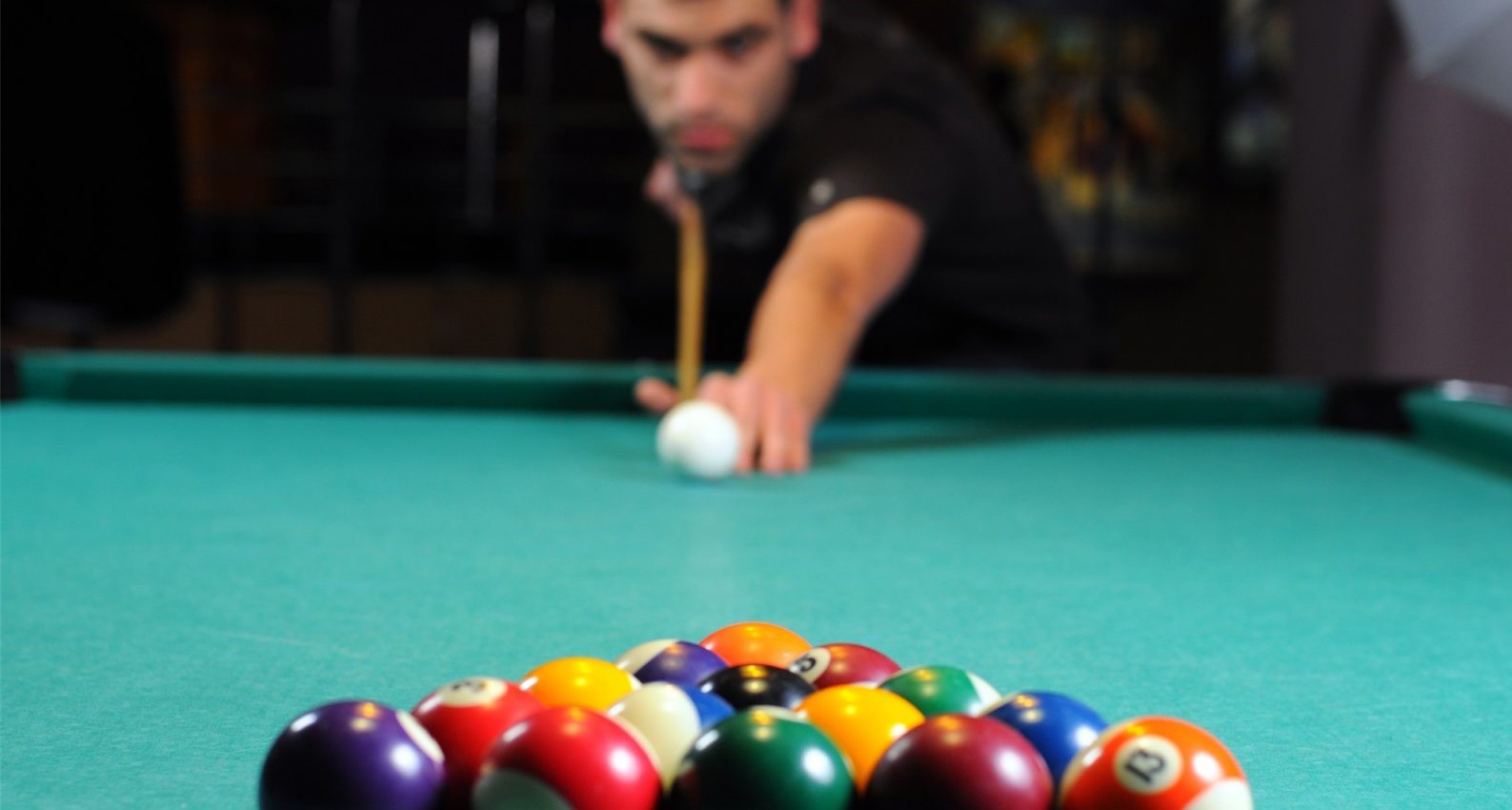
Billiards is a beloved sport that has been played for centuries. From smoky pool halls to elegant billiard rooms, this game has captured the hearts of players and enthusiasts alike. Whether you’re a seasoned pro or a casual player, there’s always something fascinating to learn about the world of billiards.
In this article, we’ll dive into 15 interesting facts about billiards that will not only pique your curiosity but also enhance your knowledge of the sport. From the origin of the game to surprising world records, you’ll discover a wealth of information that will make you appreciate this timeless pastime even more.
So, grab your cue stick and chalk, and get ready to explore the intriguing world of billiards.
Key Takeaways:
- Billiards, also known as cue sports, has a rich history dating back to the 15th century and offers various game variations like pool, snooker, and carom, providing entertainment for players of all ages.
- Successful billiards players require mental concentration, precise aiming, and a solid understanding of angles and geometry, making it a challenging yet enjoyable recreational activity for everyone.
Billiards is also known as cue sports.
Billiards, commonly referred to as cue sports, encompasses a variety of games that are played on a billiard table. These games typically involve the use of a cue stick to strike balls and aim for certain objectives.
The origins of billiards can be traced back to the 15th century.
The exact origins of billiards are unclear, but it is believed to have originated in Europe during the 15th century. The game underwent various transformations over time and eventually spread across different regions, gaining popularity in the process.
There are three main variations of billiards: pool, snooker, and carom.
Billiards has evolved into different variations, each with its own set of rules and gameplay. Pool, snooker, and carom are the most widely recognized variations of the game, each offering unique challenges and strategies.
The term “cue ball” refers to the white ball used to strike and pocket other balls.
In billiards, the cue ball is the white ball that players use to strike the other balls on the table. Its primary purpose is to make contact with other balls and pocket them according to the specific rules of the game being played.
The game of billiards requires precise aiming and ball control.
One of the key skills in billiards is the ability to aim accurately and control the movement of the balls. Players must possess a combination of skill, strategy, and focus to succeed in the game and outmaneuver their opponents.
Efren Reyes, also known as “The Magician,” is considered one of the greatest billiards players of all time.
Efren Reyes, a Filipino professional billiards player, is celebrated for his exceptional skill and finesse on the table. His mastery of various billiards games has earned him numerous accolades and the admiration of fans worldwide.
The game of billiards requires a solid understanding of angles and geometry.
Due to the nature of the game, players must have a good grasp of angles and geometry to accurately predict and calculate the path of the balls. This knowledge helps in planning shots and executing strategies effectively.
The Billiard Congress of America (BCA) was formed in 1948.
The Billiard Congress of America (BCA) is a nonprofit organization that serves as the governing body for professional billiards in the United States. It promotes the sport, organizes tournaments, and establishes standards for equipment and rules.
Billiards requires a high level of mental concentration and focus.
Successful billiards players must possess strong mental concentration and unwavering focus. The game often requires careful analysis of the table, strategic decision-making, and the ability to anticipate the opponent’s moves.
The term “break” refers to the opening shot in a game of billiards.
When starting a game of billiards, the first shot is known as the break. The player aims to strike the rack of balls in a way that disperses them across the table, creating opportunities for subsequent shots.
The World Pool-Billiard Association (WPA) governs international pool competitions.
The World Pool-Billiard Association (WPA) is recognized as the leading authority for international pool competitions. It sets the standards for tournament play, organizes world championships, and promotes the growth of the sport worldwide.
Billiards is a popular recreational activity enjoyed by people of all ages.
Billiards is not only a competitive sport but also a popular recreational activity. Whether played in pool halls, bars, or even in the comfort of one’s own home, billiards provides entertainment and a social atmosphere for enthusiasts.
The term “cue” refers to the stick used to strike the cue ball.
In billiards, the cue is the long, slender stick used to strike the cue ball. It is essential for accurately hitting the desired target ball and controlling the force and spin applied to the shot.
The game of snooker originated in British Army officers’ messes in India during the 19th century.
Snooker, a popular variation of billiards, has its roots in the British Army officers’ messes in India. It quickly gained popularity among the military and gradually spread to become a widely recognized and loved billiards game.
Billiards is enjoyed by both professional players and casual enthusiasts around the world.
Whether competing at a professional level or playing for fun with friends and family, billiards continues to be a beloved pastime worldwide. The game has a rich history, diverse variations, and a strong community of players who appreciate its unique blend of skill and strategy.
Conclusion
In conclusion, billiards is a fascinating sport with a rich history and a set of unique facts that make it even more captivating. From its origins in medieval Europe to its widespread popularity today, billiards continues to captivate players and spectators alike. Whether you’re a seasoned player or just a casual observer, these 15 facts about billiards shed light on the intricacies and allure of this beloved sport. So the next time you find yourself near a billiards table, remember these interesting tidbits and impress your friends with your newfound knowledge of the game.
FAQs
1. When was billiards invented?
Billiards traces its roots back to the 15th century in Europe, specifically in France and England. It evolved from a lawn game known as croquet into the indoor table game now known as billiards.
2. How many balls are used in a game of billiards?
A typical game of billiards is played with 16 balls – one white cue ball, 15 colored object balls, and sometimes an additional cue ball for practice purposes.
3. What is the objective of billiards?
The objective of billiards is to use a cue stick to strike the white cue ball and hit the other object balls to score points. The ultimate goal is to pocket the object balls into the designated pockets on the table using various techniques and strategies.
4. Is billiards the same as pool?
While billiards and pool are often used interchangeably, they are not the same. Billiards generally refers to the broader category of cue sports, while pool specifically refers to a variant of billiards played on a specific type of table with pockets.
5. Are there different game variations in billiards?
Yes, there are numerous game variations in billiards, including eight-ball, nine-ball, straight pool, and snooker, among others. Each variation has its own set of rules and strategies, making billiards a versatile and dynamic sport.
6. Is billiards a physically demanding sport?
While billiards may not require as much physical exertion as some other sports, it still requires a high level of focus, precision, and mental agility. Players must have excellent hand-eye coordination and strategic thinking to excel in this sport.
7. Can anyone play billiards?
Absolutely! Billiards is a sport that can be enjoyed by people of all ages and skill levels. Whether you’re a beginner or an experienced player, there are various levels of play and opportunities to improve your skills.
8. Are there professional billiards tournaments?
Yes, there are professional billiards tournaments held worldwide, showcasing the talent and skill of top players. These tournaments offer substantial prize money and attract fans and viewers from around the globe.
9. Are there any famous billiards players?
Yes, there have been numerous iconic billiards players throughout history, including Efren Reyes, Willie Mosconi, and Jeanette Lee. These players have achieved legendary status in the world of billiards due to their exceptional skills and achievements.
10. Can billiards be played for recreational purposes?
Absolutely! Billiards is not only played at a professional level but also enjoyed as a recreational activity by many. It can be a great way to socialize with friends and family while honing your skills and having fun.
Billiards enthusiasts and curious readers alike can further explore this captivating sport by diving into related topics. For those with limited space, a mini billiards table offers a compact solution to enjoy the game at home. Uncover even more enigmatic facts about billiards or pool that will surprise and delight players of all levels. Finally, learn the nuances that set apart billiards and pool, two similar yet distinct cue sports that have captured the hearts of millions worldwide. Continue your journey into the world of billiards and expand your knowledge of this timeless pastime.
Was this page helpful?
Our commitment to delivering trustworthy and engaging content is at the heart of what we do. Each fact on our site is contributed by real users like you, bringing a wealth of diverse insights and information. To ensure the highest standards of accuracy and reliability, our dedicated editors meticulously review each submission. This process guarantees that the facts we share are not only fascinating but also credible. Trust in our commitment to quality and authenticity as you explore and learn with us.


